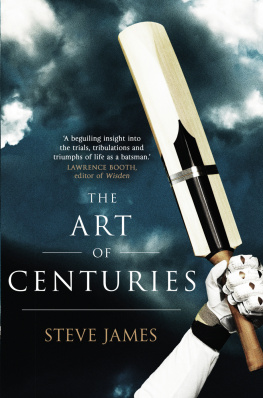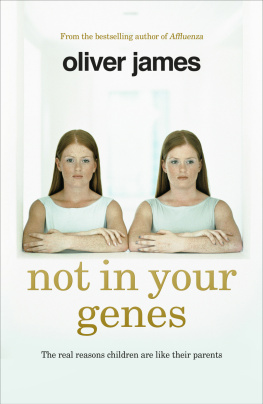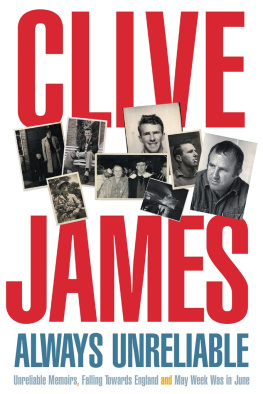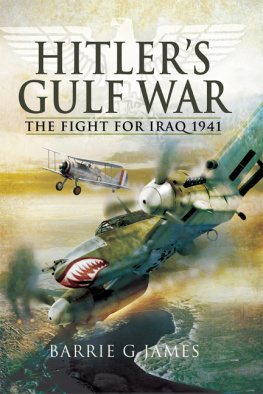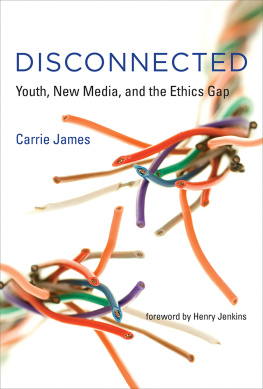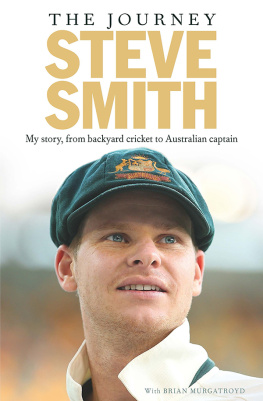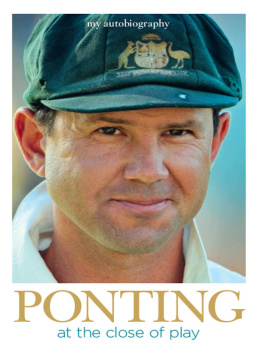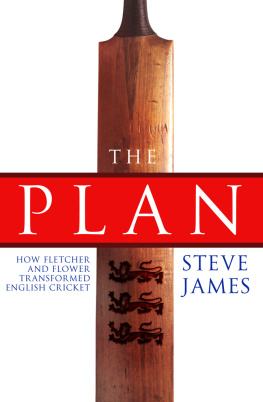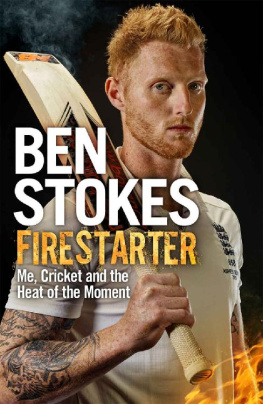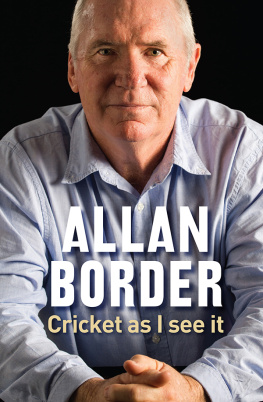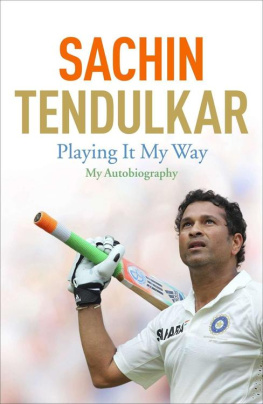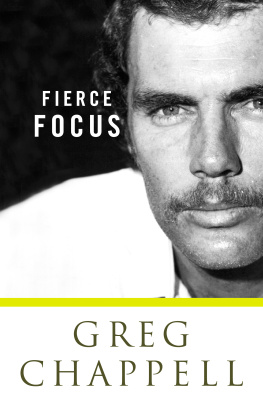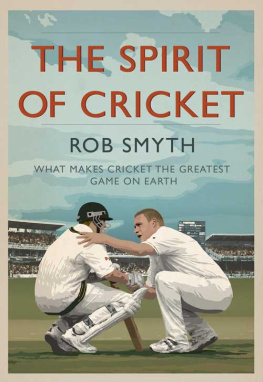Contents
Also by Steve James
Third Man to Fattys Leg: An Autobiography
Ashes Regained (with Duncan Fletcher)
Behind the Shades (with Duncan Fletcher)
The Plan: How Fletcher and Flower Transformed English Cricket
Refuse to be Denied (with Sam Warburton)
Lions Triumphant (with Sam Warburton)
The Gloves Are Off (with Matt Prior)
THE ART OF CENTURIES
STEVE JAMES
TRANSWORLD PUBLISHERS
6163 Uxbridge Road, London W5 5SA
www.transworldbooks.co.uk
Transworld is part of the Penguin Random House group of companies whose addresses can be found at global.penguinrandomhouse.com

First published in Great Britain in 2015 by Bantam Press
an imprint of Transworld Publishers
Copyright Steve James 2015
Steve James has asserted his right under the Copyright, Designs and Patents Act 1988 to be identified as the author of this work.
Every effort has been made to obtain the necessary permissions with reference to copyright material, both illustrative and quoted. We apologize for any omissions in this respect and will be pleased to make the appropriate acknowledgements in any future edition.
A CIP catalogue record for this book
is available from the British Library.
Version 1.0 Epub ISBN 9781448170906
ISBN 9780593072929
This ebook is copyright material and must not be copied, reproduced, transferred, distributed, leased, licensed or publicly performed or used in any way except as specifically permitted in writing by the publishers, as allowed under the terms and conditions under which it was purchased or as strictly permitted by applicable copyright law. Any unauthorized distribution or use of this text may be a direct infringement of the authors and publishers rights and those responsible may be liable in law accordingly.
1 3 5 7 9 10 8 6 4 2
To Mum and Dad
I miss you both terribly
Acknowledgements
A confession first: this book was not initially my idea, so many thanks to my publisher, Giles Elliott of Transworld, for providing that, in such detail too, and also for his unstinting support and guidance throughout. Thanks also to David Luxton of DLA for his support of the project and his advice, especially during its completion.
Thank you too to Adam Sills, Andrew Fifield and everyone else at the Telegraph for allowing me to complete this long project alongside my main job.
I must make special thanks to Benedict Bermange, Sky Sports statistician, whose help was invaluable in a book where statistics have to have a certain prominence. He is undoubtedly the best in that business.
Thank you to those people I interviewed: Graham Gooch, Andy Flower, Mike Atherton, Andrew Strauss, Murray Goodwin, Matthew Maynard, Nathan Leamon, Kirk Russell, Ian Thomas, Mike Powell, Adrian Dale and Gareth Rees.
And also to others who have helped in some way or other: Huw Bevan, Douglas Henderson, Gideon Haigh, Peter Hayter, Ed Smith, David Parry, Scyld Berry, David Morgan and Peter Mitchell.
Finally, thank you to my family, wife Jane and children Bethan and Rhys, for their patience and love. This is my eighth book and the commitment required never relents. I hope they understand.
Introduction:
The First Century
Id forgotten my socks. This was important. Id forgotten the grey marl socks that Id been told all cricketers had to wear. I had my vest, my Viyella shirt and my cream flannels all packed into my leather bag, but I did not have my socks.
My father was a stalwart club cricketer deeply imbued with the traditions and habits of the game. For many a long year he had already stressed that in order to become what he termed a proper cricketer one had to look like a proper cricketer.
And so the short white socks used for PE lessons? No chance. Normal grey school socks? Sacrilege.
No, this 12-year-old had to get hold of his proper cricket socks if he was to perform on the cricket field that sunny summer afternoon many years ago in 1980.
It was a Saturday, and the usual morning lessons at Monmouth School were taking place. But at breaktime there was sufficient time to slip just outside the school to the phone box (mobile phones were still a very distant thought, of course) to call Peter James Sports in Lydney.
Hello, came the answer. In went the coin. Dad, its me, I said.
Hello, my son, he said, as he always would, even if there was some surprise in hearing my voice at this time.
Ive got a problem, I said. Ive forgotten my socks.
You silly bugger, he replied. He knew that there was no option here. There was no arguing. He knew that I had to have those socks.
Youre playing at Brightlands, arent you? Ill meet you there, he said.
Brightlands School no longer exists, but it was situated in the village of Newnham in Gloucestershire, on the west side of the River Severn. The cricket field is still used by the village team. If you drive from my hometown of Lydney on the A48 towards Gloucester, it is up on the left as the road takes a straight stretch alongside the river into the next village of Broadoak.
Every time I take that road, I think the same thing: This is where it all began. For it was there on that day in 1980 that I scored my first century.
My dad was there at Brightlands when we arrived. He had those socks. He then lingered a while until it was ascertained that we were batting. He decided to stay a bit longer. My mother could tend the shop for a while. I was hardly going to bat all afternoon. I had never done that before.
Well, not before that day anyway. It was a declaration match, and by the time the tea interval was called, I was 97 not out.
There was now a dilemma. It was, of course, usual for the declaration to take place there and then, but in this instance it was decided that we should go back out in order to allow me to score my first century.
I must admit that I was very uneasy about this, even more so when I overheard a few of my opponents parents complaining about it.
But out I went, hitting the four required and in doing so changing my life for ever. My father, quite an influence upon my career as you may have already gathered, had always said that any batsman wishing to be recognized at any level had to score hundreds, lots of them, and big ones if possible.
Sadly he passed away in February 2014 before I completed this book, just as my mother had in 2011 before I had finished a previous book, The Plan, about the influence of the Zimbabwean coaches, Duncan Fletcher and Andy Flower, upon the England team between 1999 and 2011.
But when beginning this book, I was able to ask my father about this importance of scoring centuries. I always told you that, he said. Its bloody true, it always will be.
My father was actually a bowler, who bowled off-cutters in the style of the great Glamorgan bowler Don Shepherd, and was a specialist No. 11 batsman, who was quite proud of the fact that he once made 25 consecutive ducks, 11 of them being first-ballers. That statistic was recalled, to much laughter, during his funeral service. But he knew his cricket, and he knew what was required of a batsman.
Just for confirmation, lets look at the opinion of a rather more reliable batsman. At the beginning of the 1962 season, Yorkshires second-team captain, former batsman and future scorer, Ted Lester, gave Geoffrey Boycott some advice. If you get the chance, score centuries, he said.

